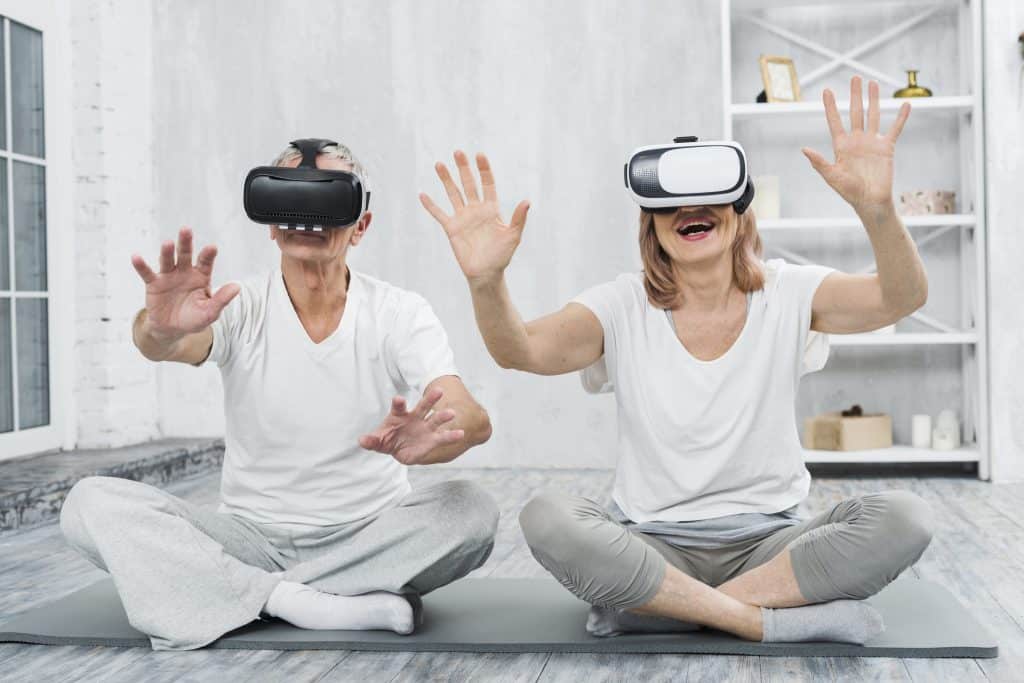Virtual reality (VR)—once confined to gaming—is gaining serious traction in mental health care. From treating anxiety and phobias to delivering guided meditation, VR is no longer a novelty; it’s evolving into a mainstream therapeutic tool. As we face rising rates of stress, depression, and PTSD, understanding how virtual reality is reshaping therapy is both timely and essential.
Here’s a guide on the latest trends, evidence-based benefits, and practical insights for anyone curious about VR’s role in mental wellness.

Why Virtual Reality Is Reshaping Therapy: The Core Advantages
Immersive Exposure That Feels Real
Traditional exposure therapy requires facing fears—like heights or social situations—directly. VR Exposure Therapy (VRET) does this virtually, offering safe yet powerful experiences. This method demonstrates large treatment effects comparable to in-person exposure therapy, particularly for phobias and PTSD .
Remote Access Through Tele-VR
VR therapy is also transitioning to telehealth. Studies show VR-based mental healthcare delivered remotely is effective, accessible, and personalized. With VR kits and tele-VR sessions, users can receive tailored treatments right from home—no clinic visits required.
How Virtual Reality Is Reshaping Therapy: Proven Applications
Anxiety, Phobias, and PTSD
VRET is effective for treating anxieties, from fear of flying to dental phobia. Clinical settings from the U.S. to Australia report success in symptom reduction—up to 34% in some PTSD cases. VR environments offer graded, controlled exposure that outperforms imagination-based therapy.
Meditation and Mood Regulation
A 2025 Texas A&M study found VR meditation reduced anxiety and depression more than traditional meditation. Immersive environments—like virtual forests or seaside vistas—improve emotional control and promote calm.
The Role of Virtual Reality in Reshaping Therapy for Different Groups
Teenagers and Adolescents
Adolescent mental health programs are utilizing VR for emotional regulation and social skills. A randomized study of nearly 800 teens demonstrated improvements in cognitive ability, emotional resilience, and social adaptation after VR interventions.
Avatar Therapy for Psychosis
In the UK, VR “avatar therapy” has reduced distress in psychosis patients, offering dialogues with virtual representations of hallucinated voices. Trials suggest voice frequency and distress decline significantly, opening new therapeutic pathways.
Key Benefits Clients and Clinicians Report
Engagement and Acceptance
Clients often report feeling safe and engaged in VR therapy—especially when guided remotely.
Clinician Perspectives
A scoping review of clinicians found growing acceptance of VR in mental health, despite initial unknowns. Training and exposure boosted clinician confidence in VR’s potential .
Practical Guide: How to Experience or Use Virtual Reality Therapy
- Consult a Licensed Therapist: Seek a practitioner trained in VR-based approaches.
- Choose the Right Application:
- VRET for phobias/PTSD
- VR meditation tools for anxiety/depression
- Avatar therapy for psychosis
- Consider Tele-VR Options: Some platforms ship headsets and offer sessions from home.
- Track Progress with Metrics: Many programs include built-in assessments or self-reports.
- Watch for Side Effects: Some users can experience motion sickness—opt for low-motion VR setups .
The Future of Virtual Reality in Mental Health
Multisensory Relaxation
Research on multisensory VR (adding scent or temperature control) shows stronger mindful absorption in virtual nature settings—a next frontier in stress relief.
Self-Guided Virtual Reality Interventions
Self-guided VR therapies for anxiety are emerging. A 2025 review found them effective and user-friendly, with fewer dropouts compared to traditional self-help.
AI-Enhanced Therapeutic Avatars
Trials are underway to create AI-driven avatars, potentially reducing the need for human support. Still, safeguards are critical to prevent adverse effects .
Challenges to Widespread Virtual Reality Therapy Adoption
- Cost and Access: Hardware and software can be expensive; tele-VR helps but insurance coverage varies.
- Training and Support: Therapists need specialized training to deploy VR effectively.
- Ethical Considerations: Boundary-setting and managing adverse VR-induced emotions require new protocols.
Final Thoughts
VR isn’t just replacing tools; it’s expanding therapeutic possibilities. Immersive techniques enhance exposure therapy, emotion regulation, and accessibility. With growing clinical support and adoption, it’s clear: virtual reality is reshaping therapy by offering innovative, scalable, and engaging mental health solutions.
As costs drop and evidence grows, VR is poised to become a standard part of mental wellness care—complementing traditional therapy, not replacing it. Whether you’re exploring it as a therapist, client, or developer, VR offers an exciting path forward in reshaping mental health care—one immersive step at a time.
References
- Nature: VR exposure therapy in everyday scenarios, Univ. of Melbourne https://pmc.ncbi.nlm.nih.gov/articles/PMC6231506/
- Frontiers in VR (2025): Telehealth-based VR clients’ perspectives https://www.frontiersin.org/journals/virtual-reality/articles/10.3389/frvir.2025.1595326/full
- ArXiv (2023): Multisensory VR stress reduction https://arxiv.org/abs/2309.00718









